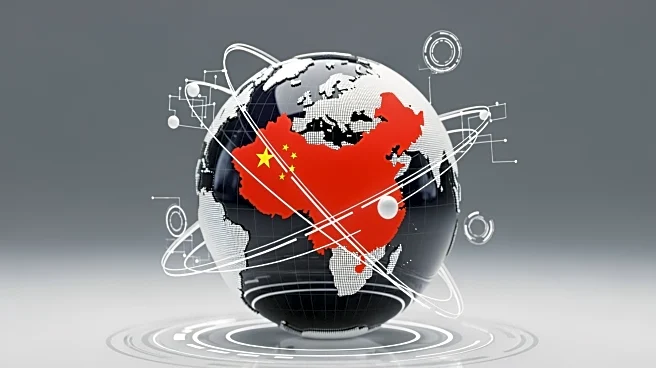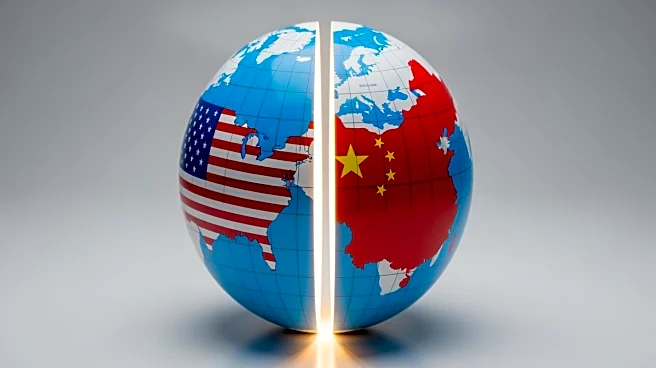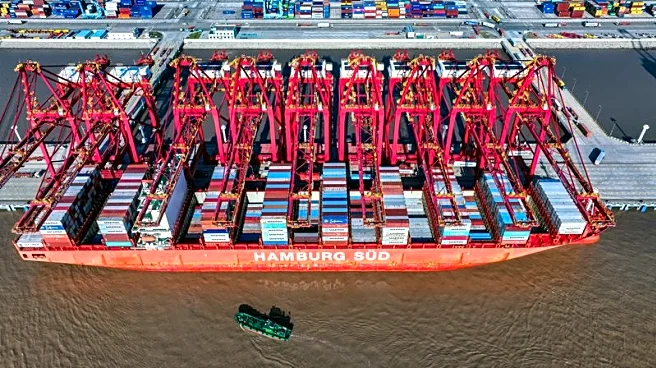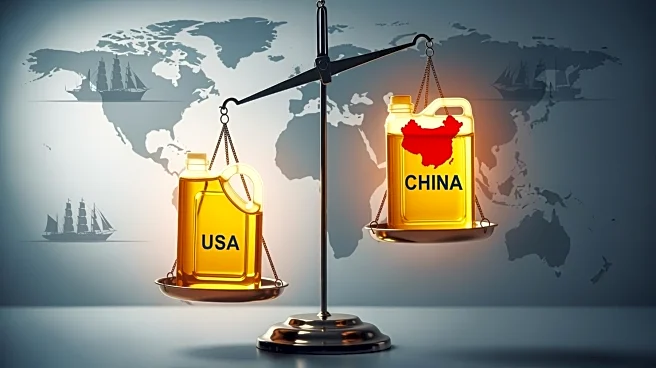What's Happening?
China's ruling Communist Party is convening a significant meeting in Beijing, led by Xi Jinping, to outline the country's strategic goals for the next five years. This closed-door session, known as the fourth
plenum, will finalize the blueprint for China's development from 2026 to 2030. The meeting occurs amidst heightened trade tensions with the United States, with potential discussions between Xi and President Trump anticipated at a regional summit later this month. The plenum will address economic priorities such as boosting consumer spending, investment, and technological self-sufficiency, particularly in response to U.S. export controls and tariffs. China's economy is projected to grow by 4.8% this year, close to its target of 5%, despite challenges from the ongoing trade war and domestic issues like the property sector downturn.
Why It's Important?
The outcomes of this meeting are crucial for global economic stakeholders, as China's strategies will influence international trade dynamics, especially with the U.S. China's focus on technological self-sufficiency could lead to increased investment in advanced technologies, impacting global tech industries. The emphasis on boosting consumer spending and addressing overcapacity in industries like automotive could reshape market competition and trade patterns. Additionally, China's demographic challenges, including a shrinking and aging population, pose long-term economic implications. The leadership's approach to these issues will affect China's ability to maintain robust economic growth, which is vital for its goal of doubling the economy by 2035.
What's Next?
Following the plenum, the specifics of China's five-year plan will likely be unveiled during the National People's Congress session in March. The international community, particularly the U.S., will closely monitor China's policy shifts, especially regarding trade and technology. Potential personnel changes within the Communist Party could also influence China's domestic and foreign policy directions. Economists suggest that bolder moves are necessary to significantly boost consumer confidence and spending, which may lead to new government initiatives. The ongoing trade tensions with the U.S. could see further diplomatic engagements or negotiations aimed at easing economic frictions.
Beyond the Headlines
China's pursuit of technological leadership and self-sufficiency reflects broader geopolitical ambitions, potentially altering global power dynamics. The focus on reducing reliance on U.S. technology could accelerate innovation within China, impacting global tech supply chains. Additionally, China's demographic pressures and economic strategies may lead to shifts in labor markets and social policies, influencing global economic stability. The leadership's ability to balance economic growth with social welfare improvements will be critical in maintaining domestic stability and international influence.












